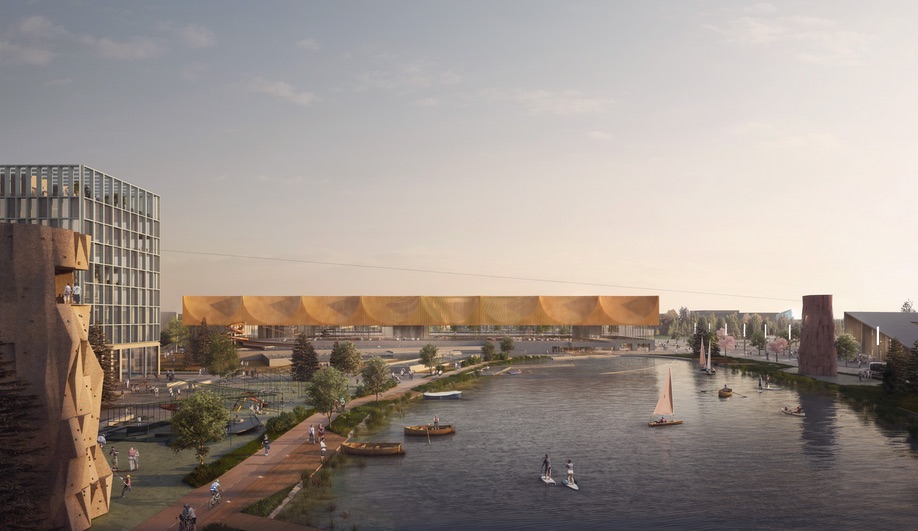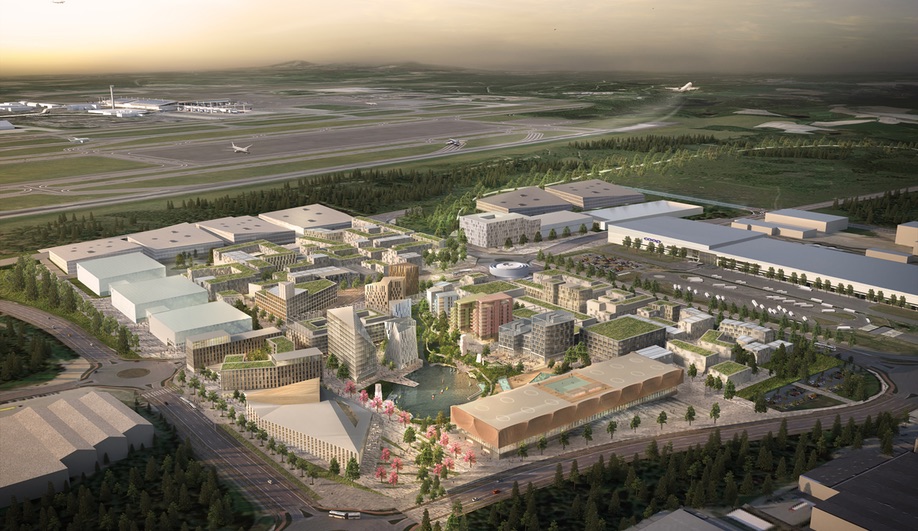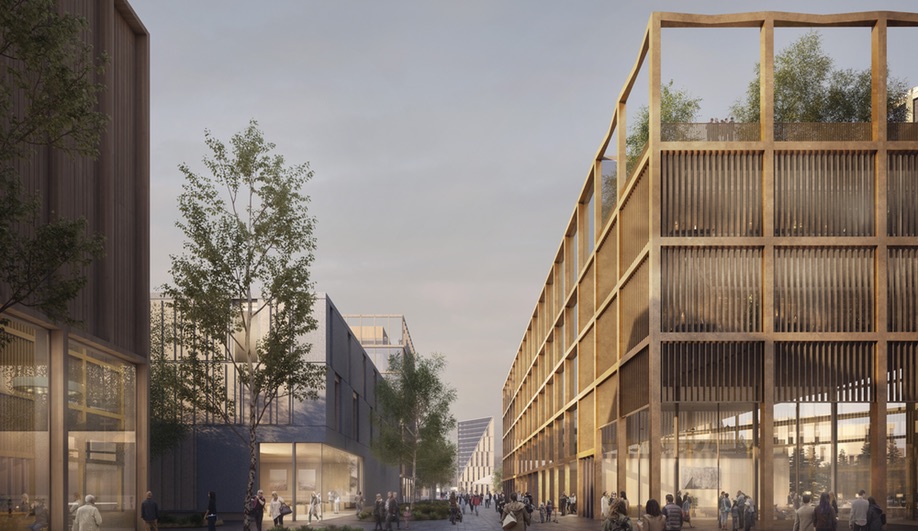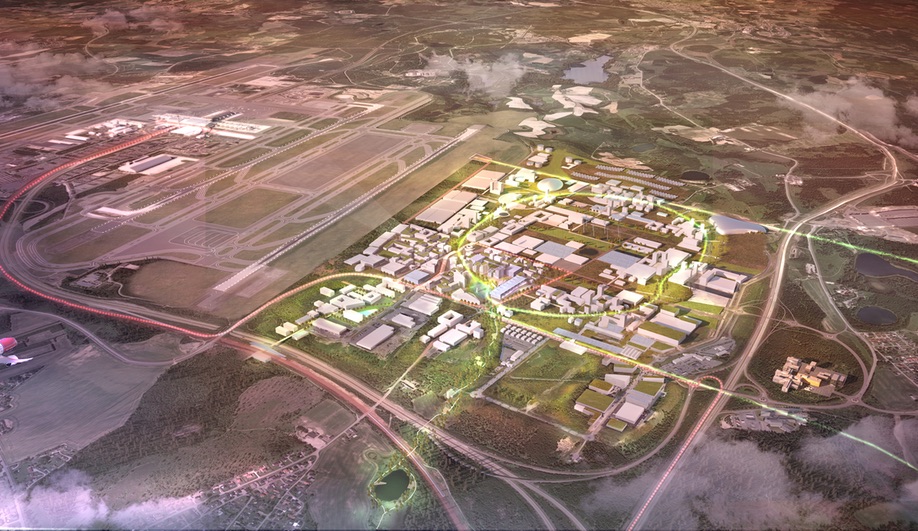
The smart city hasn’t arrived yet, but it will soon. In Toronto, Google’s Sidewalk Labs is designing Quayside, a technology hotbed “built from the internet up.” In Columbus, the city is being reimagined around cutting-edge transit. And in Oslo, local firm Haptic Architects wants to build an energy-positive urban hub around the Oslo International Airport.
The only catch? Oslo Airport City isn’t exactly the urban hub of tomorrow – Haptic estimates it will take 30 years to complete.

Nonetheless, the master plan, developed by Haptic in tandem with Nordic – Office of Architecture, articulates an ambitious vision for city- (and even nation-) building. Currently, Norway’s economy is heavily reliant on its oil reserves; it’s the world’s second-leading exporter of oil, only trailing Saudi Arabia. Yet in planning Oslo Airport City, Haptic imagined a city that is entirely powered by renewable energy.
The surplus power it generates can be sold to neighbouring communities.

Spread over 370 hectares, the city aims to provide services for the airport, including housing and amenities for its workforce – which is estimated to grow 80 per cent by 2050, providing 40,000 jobs. It will also house critical services, like de-icing facilities, as well as hotels, a convention centre, offices, logistic areas, a car-free urban centre and recreation facilities; the renderings depict green spaces dominated by large bodies of water.
Haptic’s goal is to have transit accessible in five minutes or less. That will be beneficial to the city’s inhabitants, but also to travellers; last year, 27 million passengers passed through Oslo International Airport.

Oslo Airport City aligns with current trends: the Ullensaker municipality, which surrounds the airport, is already one of the fastest-growing areas in Norway, and service-based industries are replacing the military and agriculture as the region’s dominant employers.
“Capitalizing on the central location in northern Europe, a highly skilled workforce and proximity to an expansive and green airport, OAC has all the ingredients needed to make this a success,” says Tomas Stokke, director at Haptic.

Walkability, thoughtful density and the activation of building fronts – with a mix of uses, like residences, retail, cultural facilities and schools – are the key drivers of the master plan. The city will be an extension of the sustainability efforts already underway at Oslo International Airport, which is aiming to roll out an all-electric fleet by 2025. Driverless cars and automated lighting, transit and security features are being planned.
The city’s tech-driven focus, says Thor Theonie, managing director of Oslo Airport City, makes for “high-value economic activity.” The jobs it creates go beyond creating wealth in the service and transportation sectors. “We expect it to deliver long-term, highly skilled jobs creating science and technology-based products as well as providing employment in services such as specialized healthcare and executive education and training.”

The most novel, and perhaps most exciting, element of Oslo Airport City is how it departs from traditional city planning. While airports have traditionally been built to service cities, here, a city is being built around an airport. “Look for yesterday’s busiest train terminals, and you will find today’s great urban centres,” air commerce expert John Kasarda wrote in his 2011 book, Aerotropolis. “Look for today’s busiest airports, and you will find the great urban centres of tomorrow.”

Can Oslo Airport City offset the impact of air travel? It remains to be seen. Construction is set to begin in 2019 or 2020.
